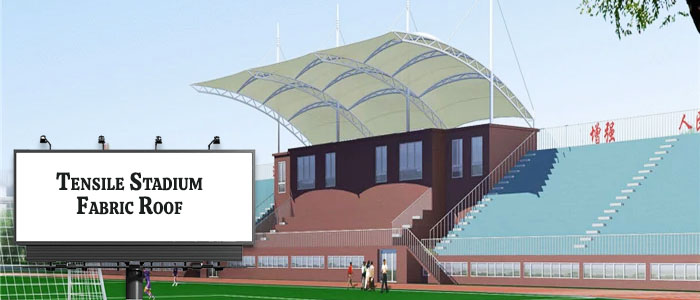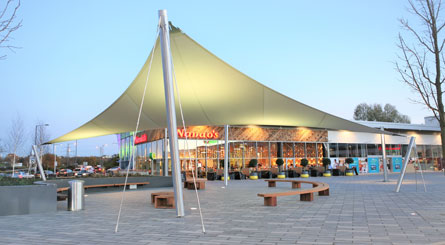How Tensile Structures Work: A Step-by-Step Explanation
December 12, 2025 By admin

How Tensile Structures Work: A Step-by-Step Explanation
have you ever sat back and admired how the curves of modern stadiums, especially the roofs or the puffing-up structure of a temporary event space? These mind-blowing structures may very well be tensile structures. But how do these looking like simple innovations cope with the conditions and the weather? Now let’s go deeper in the discussion of tensile structures and let’s discuss it with the help of the step-by-step explanation of working.
The Power of Tension:
The designs of the tensile structures do not have the same characteristics as other constructions that depend on beams as well as columns to offer resistance to compressive loads, which can be explained as pushing forces inwards. Picture yourself having two people connected by a string right to the chest – much strength is created. Tensile structures tend to work on the same principle. This means that above mentioned structure is very light and very strong at the same time or it is covered by a strong and flexible membrane made of fabric that is taut on the network of cables or masts.
Step-by-Step Breakdown:
Design and Engineering: The first analysis is the design and engineering step which must be done carefully. Software specifically with this function aids in the design of the tensile structure into the best form that would be able to handle the force exerted by wind, snow, and other factors. It specifies the characteristics of fabric and cable products and analyzes their suitability by listed parameters such as strength, weight, and light transmission.
Fabrication: Advanced technology is employed to fashion the various parts in today’s manufacturing. The fabric membranes are usually created out of advanced materials such as PVC or PTFE, which provide features of weather and wear and tear. The cables are normally made of steel or any other material of high tensile strength.
Assembly: On-site assembly is somewhat complex and time-consuming; it has to be done carefully and by professionals. The cables are fixed to masts or similar structures and the fabric membrane is tensioned and attached to the cables either by sewing, welding, or other specialized means of fastening.
Tensioning: Then, tensioning follows: As mentioned earlier, many processes in OD are reversible if done correctly, and tensioning is one of them. Also, through winches or turnbuckles, the cables are adjusted to its required tension according to design. This gives the fabric the typical tense feel and applies pressure to the whole structure so that the whole structure will be stressed as designed.
The Benefits of Going Tensile: The Benefits of Going Tensile:
Tensile structures have the following benefits over the conventional construction processes. Here are some key benefits: Here are some key benefits:
Lightweight and Spacious: It is hard to find columns in roofs that are constructed using lightweight materials; this characteristic is preferred for outdoor areas or large meeting halls.
Adaptability and Design Freedom: Compared to other structures, tensile structures can be designed in so many forms and this makes it possible for them to be utilized in many areas.
Cost-Effectiveness: Better utilization of materials and the possibility of the use of prefabricated structures may result in cost-effectiveness as compared to conventional building construction.
Natural Light Transmission: Most tensile fabric structures admit diffused natural light into the interior to make the interior look very light.
Sustainability: Because tensile structures offer light structures, it could be possible to minimize the structure’s total weight thus less energy utilization.
From Ancient Tents to Modern Marvels: From Ancient Tents to Modern Marvels:
Tension is something that has been used in structures for many years and a good example is tents. However, current tensile structures have gone a notch higher in aspects of design and engineering. Today, they are applied to fulfill several functions – stadiums, terminals of airports, concert halls, and even temporary accommodation facilities.
Therefore, the next time you experience the charm of a tensile structure you should consider taking time to look at the design. These elegant creations are a vivid display of tension in the process and the ongoing struggle for progression in the sphere of architecture.







